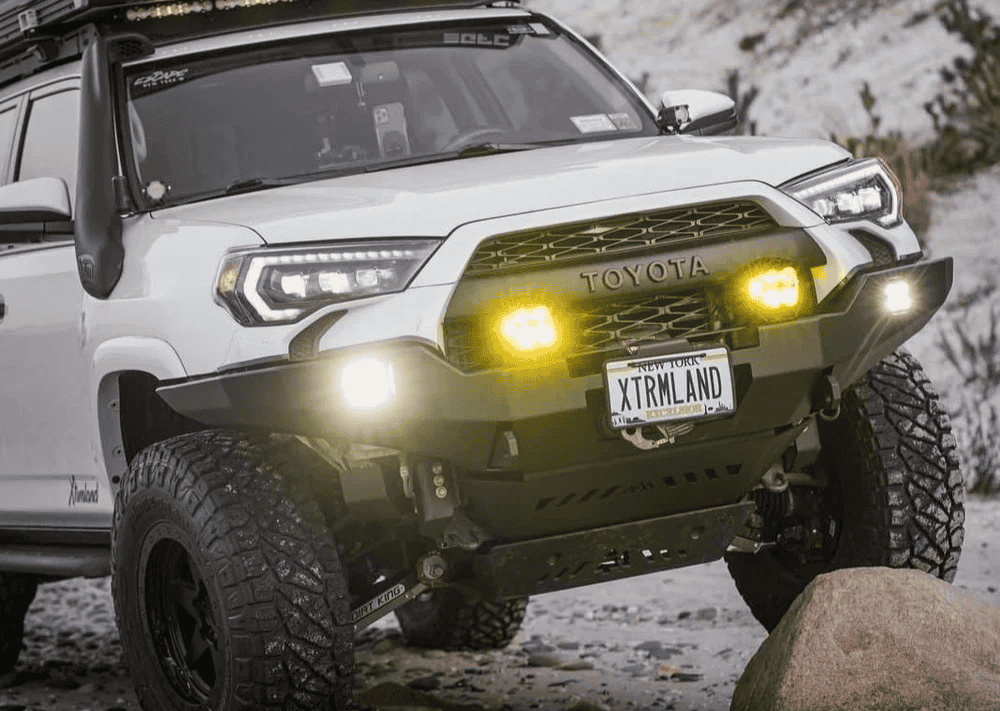Overland Vehicles

Solar power for overland rigs starts with math, not gear. Every reliable system begins with an energy budget built from the devices you plan to run and for how long. Add daily watt hour totals for refrigeration, lighting, fans, pumps, inverters, and charging devices. That number sets your minimum battery capacity and panel array size. Once you know the demand, you can choose hardware that survives dust, heat, vibration, and the occasional tree branch.
Monocrystalline panels deliver the best efficiency in a compact footprint. Rigid frames resist flex and heat better than flexible sheets on long trips. In real conditions, expect less than rated output due to temperature, wiring losses, and shading. Use peak sun hours for your region to estimate harvest. For many routes in the lower forty eight, four to six sun hours is a realistic planning figure in fair weather.
Add a buffer of twenty to thirty percent for cloudy days and standby loads you will forget.
A practical starting point is to have panels that can replace most of your daily use in a single sunny day. If you consume one thousand watt hours, aim for three hundred to four hundred watts of roof solar at a minimum in fair climates, more for shoulder seasons. Lithium iron phosphate batteries store energy efficiently, tolerate deep cycles, and offer long life. A single one hundred amp hour lithium battery holds about one thousand two hundred watt hours usable. Many travelers pair two for reserve.
Use an MPPT controller sized above your array current and voltage. Overspec slightly to reduce heat and improve longevity. Keep wiring short and correctly gauged to limit voltage drop.
Every component should handle heat, vibration, and water. Seal rooftop penetrations with proper backing and compression hardware. Use stainless fasteners and thread locker where appropriate. Route cables through glands with drip loops and abrasion protection. MC4 connectors are common for panel terminations. Crimp with the right tool, then test for continuity and polarity before connecting to the controller.
Mount panels with airflow underneath to lower cell temperature. Elevated mounting improves performance and makes cleaning easier. Where trees are frequent, consider more roof capacity rather than relying on portable panels that require setup in camp. Portable panels help in shade, but they add complexity and risk of damage.
Flat mounts are the norm for overland travel because tilting while parked is not always practical. Expect about ten to twenty percent less harvest when flat compared to optimal tilt. Compensate by adding panel wattage. Keep shadows off even a small portion of the array, because shade can dramatically cut output. Space panels to avoid rack crossbar shadows during midday.
Choose MPPT over PWM to squeeze more energy from variable conditions. Verify controller input limits against your panel open circuit voltage at low temperatures. Install a fuse or breaker on battery positive and a disconnect that lets you service the system safely. Ground appropriately and follow manufacturer torque specs on all lugs.
Solar is your steady charger, but alternator charging keeps you topped during long drives. A DC to DC charger manages voltage for lithium batteries and protects the vehicle alternator. Many set systems to prioritize solar while driving, then the DC to DC picks up when clouds or shade reduce harvest. Add shore power as a third charging path for garage prep or campsite hookups.
Battery chemistry matters. Lithium iron phosphate performs well over many cycles, charges efficiently, and is lighter than AGM. Cold weather protection is essential, so choose batteries with a low temperature charge cutoff or heated options if you visit freezing climates. A battery monitor or shunt gives real numbers for state of charge. Rely on measured data rather than guesses to plan your day.
Carry a multimeter and know your baseline voltages and currents. If output drops, check for shadows, dirty panels, loose connectors, or tripped breakers. Clean panels with water and a soft cloth. Inspect wiring after washboard roads and re secure any strained cable runs.
Once your load math and component list make sense, the final step is integration. That means clean mounting, safe routing, and validation under real world conditions. OZK Customs builds complete overland electrical systems that pair roof solar, DC to DC alternator charging, and shore power into a single, easy to use setup. Explore our approach to overland rigs to see how panels, batteries, and controls work together as a system.
If you want a professional design and install that is tested before handoff, our team handles full wiring, protection, and monitoring with clear documentation. See what a tailored package looks like in our custom overland upfit page, then review our values and process at why choose OZK Customs.
Tell us how you travel, where you camp, and what you power. We will translate that into a durable solar and charging layout that keeps your fridge cold and your batteries full. Schedule with OZK Customs and drive out with a system that turns sunlight and drive time into dependable energy for every trip.
Ready to power your rig the right way? Book an OZK Customs consult and get a tailored solar and charging system designed, installed, and tested by experts who build overland rigs every day. Share your travel style and we will map the loads, design the system, and hand you a rig that simply works.
ADDRESS:
6159 E Huntsville Rd, Fayetteville, AR 72701
PHONE:
(479) 326-9200
EMAIL:
info@ozkvans.com